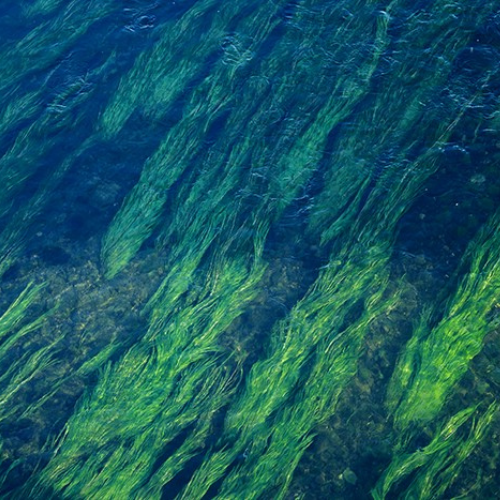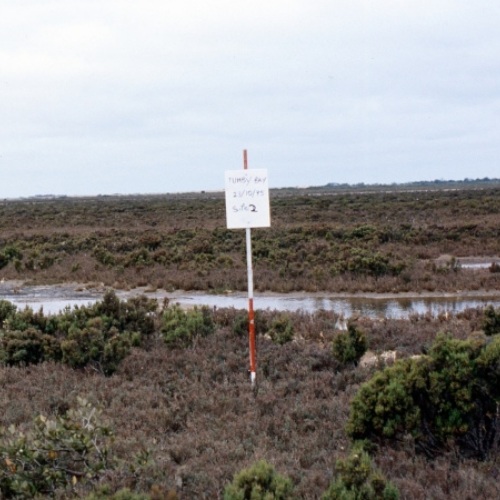CARBON SEQUESTRATION
Carbon sequestration is ‘the removal and storage of carbon from the atmosphere in carbon sinks (such as oceans, forests or soils) through (natural) physical or biological processes, such as photosynthesis’. Carbon sequestration is also called Carbon Dioxide Removal (CDR). Sequestration of carbon is something that has happened since the dawn of life on Earth. In terms of carbon sequestration’s relevance to sustainability, research is being done on technology for speeding up the Earth’s carbon cycle, in order to capture the excessive amounts of carbon dioxide that humans have generated during the Anthropocene.
Read More
That means that carbon sequestration is done by any organism that can put carbon into these sinks. These natural processes are part of the way the organisms live. Examples include the photosynthesis done by algae, fungi, plants and trees.
There is a real sense of urgency to this task because years of climate science research indicate the direct link between carbon dioxide concentrations in the atmosphere and worldwide increases in average atmospheric temperatures.
What are the different ways that carbon sequestration can be done artificially?
- Geological carbon storage (GCS) – a geoengineering process where carbon dioxide is captured from the air and pressurised into a liquid. It is then injected into the ground, where it can follow the natural carbon cycle (i.e. become part of rocks and soil). the liquid can be injected into rocks that contain oil. This is a way of getting more oil out of an old oil well, because the liquid carbon dioxide helps to make the oil less sticky, so it can be extracted more easily (USGS website, 2020).
- Enhanced weathering – a geoengineering process where the natural process of carbon dioxide dissolving into sea water is sped up.
- Ocean fertilisation – this is done by adding nutrients such as iron and phosphates into the ocean to encourage algae blooms on a large scale. When they photosynthesise, the algae absorb carbon dioxide that has dissolved from the atmosphere into the ocean. This means that they indirectly remove carbon dioxide from the atmosphere. Algae bloom naturally from time to time, so this process is just a way of encouraging this to happen more frequently and on larger scales
- Composting – this could and should be considered one of the more ‘natural’ processes that we can do now to incorporate more carbon into the soil. Composting involves increasing the amount of carbon in the soil by mixing old and decaying plant and animal matter and manure into the soil. Carbon from their tissues is broken down and integrated into the soil and carbon cycle by bacteria and other organisms.
- Soil and land management techniques – again, this is probably a more ‘natural’ or intuitive process that we can easily carry out. Soil and land management refers to practicing more sustainable farming techniques that have minimal disturbance of soil and ecosystems. Examples range from reducing the amount of tilling and ploughing (which exposes soil organic matter to the air directly, and the carbon dioxide from decomposition escapes into the atmosphere ) to controlled burning of grazing land. Another plus is that often these techniques are based on ancient indigenous knowledge and cultural practices as well.
- Using biochar – biochar is short for ‘biological charcoal’. It is made in the same as way as normal charcoal, but instead it is made from waste organic matter (such as wood chips and decaying plants) instead of solid wood. It is made by burning the waste in a container with very little to no oxygen. This helps to fix the carbon into a form that is less potent or unstable than the carbon dioxide that is released when organic matter decays naturally when it is in contact with the atmosphere. Biochar can be put into soil to help improve its quality (such as improve its ability to hold water and reduce acidity). The biochar remains in the soil sink for potentially thousands of years. In turn, plants will grow in the soil, and these plants will photosynthesise, so will continue to reduce carbon in the atmosphere over time.
What are the advantages of artificial carbon sequestration?
- Carbon dioxide is the most abundant greenhouse gas (even before humans were around), it is not hard to find
- Getting carbon dioxide out of the atmosphere and into sinks offers significant hope in reducing global warming and climate change that are predicted over the next 50 to 100 years.
- It can be done using techniques that are simple and relatively affordable e.g. composting, biochar, land management.
What are the disadvantages of artificial carbon sequestration?
- Geoengineering techniques for carbon capture are very expensive (technology, machinery, expertise etc.).
- The science behind some of the geoengineering processes are not yet fully explored – there are still some aspects that may have unknown impacts
- Artificial carbon sequestration is a bit like ‘short-circuiting’ nature’s processes for building soil and cycling carbon – could this be a risk for large amounts of carbon being released once again in the future?
- Encouraging algae blooms in oceans can have serious ecological consequences for other flora and fauna
- Geological carbon sequestration needs to be done over time periods ranging from thousands to tens of thousands of years. The benefits of carbon sequestration will take a very long time to be fully realized, seen and felt, whilst climate change is happening now
How can you contribute to carbon sequestration projects?
- Make compost (if you have a garden) – to build up the organic matter in your soil (this also reduces the amount of food waste going to landfill, where it decomposes and produces more carbon dioxide)
- Ensure that your food waste goes to composting programs if you do not have space to compost
- Buy food products that are grown on farms that practice sustainable land and soil management techniques
- Use biochar in farming, or buy products grown using biochar for soil fertilization
- Put pressure on governments to consider carbon capture and storage (CCS) projects and collaboration with international parties on this.
Examples of carbon sequestration projects and statistics around the world
There are several carbon capture and storage (CCS) projects around the world. The 18 largest of these facilities together capture about 40 Million tonnes of carbon dioxide per year. Most of these facilities are in the USA and Canada, and they are generally focused on improving crude oil extraction. The largest CCS plant in the world is in Texas, in the USA. It is called the Century natural gas processing facility and it is owned by Occidental Petroleum. The plant is focused on enhancing the amount of oil that is being extracted from the wells there. It currently sequesters about 8.4 million tonnes of carbon dioxide per year. Australia has been collaborating with China on institutional, research and technical levels since 2009 in order to investigate the potential of carbon storage in the country.
Farming techniques for improving carbon management include farms with careful management of grassland fire intensities, timing and frequencies (through controlled burning). In savanna regions, fires that burn late in the dry season are more intense and release more greenhouse gases, because they burn more dead matter. Therefore, controlled burning should happen earlier in the dry season when vegetation contains more moisture. Places where this is being done include the dry savanna regions of northern Australia by the ABC Foundation. There, aboriginal and non-aboriginal farmers are being supported in rangeland management techniques that reduce the amount of carbon being emitted from their farming practices each year.
Read Less




Carbon Sequestration




Carbon sequestration is ‘the removal and storage of carbon from the atmosphere in carbon sinks (such as oceans, forests or soils) through (natural) physical or biological processes, such as photosynthesis’. Carbon sequestration is also called Carbon Dioxide Removal (CDR). Sequestration of carbon is something that has happened since the dawn of life on Earth. In terms of carbon sequestration’s relevance to sustainability, research is being done on technology for speeding up the Earth’s carbon cycle, in order to capture the excessive amounts of carbon dioxide that humans have generated during the Anthropocene.
Read More
That means that carbon sequestration is done by any organism that can put carbon into these sinks. These natural processes are part of the way the organisms live. Examples include the photosynthesis done by algae, fungi, plants and trees.
There is a real sense of urgency to this task because years of climate science research indicate the direct link between carbon dioxide concentrations in the atmosphere and worldwide increases in average atmospheric temperatures.
What are the different ways that carbon sequestration can be done artificially?
- Geological carbon storage (GCS) – a geoengineering process where carbon dioxide is captured from the air and pressurised into a liquid. It is then injected into the ground, where it can follow the natural carbon cycle (i.e. become part of rocks and soil). the liquid can be injected into rocks that contain oil. This is a way of getting more oil out of an old oil well, because the liquid carbon dioxide helps to make the oil less sticky, so it can be extracted more easily (USGS website, 2020).
- Enhanced weathering – a geoengineering process where the natural process of carbon dioxide dissolving into sea water is sped up.
- Ocean fertilisation – this is done by adding nutrients such as iron and phosphates into the ocean to encourage algae blooms on a large scale. When they photosynthesise, the algae absorb carbon dioxide that has dissolved from the atmosphere into the ocean. This means that they indirectly remove carbon dioxide from the atmosphere. Algae bloom naturally from time to time, so this process is just a way of encouraging this to happen more frequently and on larger scales
- Composting – this could and should be considered one of the more ‘natural’ processes that we can do now to incorporate more carbon into the soil. Composting involves increasing the amount of carbon in the soil by mixing old and decaying plant and animal matter and manure into the soil. Carbon from their tissues is broken down and integrated into the soil and carbon cycle by bacteria and other organisms.
- Soil and land management techniques – again, this is probably a more ‘natural’ or intuitive process that we can easily carry out. Soil and land management refers to practicing more sustainable farming techniques that have minimal disturbance of soil and ecosystems. Examples range from reducing the amount of tilling and ploughing (which exposes soil organic matter to the air directly, and the carbon dioxide from decomposition escapes into the atmosphere ) to controlled burning of grazing land. Another plus is that often these techniques are based on ancient indigenous knowledge and cultural practices as well.
- Using biochar – biochar is short for ‘biological charcoal’. It is made in the same as way as normal charcoal, but instead it is made from waste organic matter (such as wood chips and decaying plants) instead of solid wood. It is made by burning the waste in a container with very little to no oxygen. This helps to fix the carbon into a form that is less potent or unstable than the carbon dioxide that is released when organic matter decays naturally when it is in contact with the atmosphere. Biochar can be put into soil to help improve its quality (such as improve its ability to hold water and reduce acidity). The biochar remains in the soil sink for potentially thousands of years. In turn, plants will grow in the soil, and these plants will photosynthesise, so will continue to reduce carbon in the atmosphere over time.
What are the advantages of artificial carbon sequestration?
- Carbon dioxide is the most abundant greenhouse gas (even before humans were around), it is not hard to find
- Getting carbon dioxide out of the atmosphere and into sinks offers significant hope in reducing global warming and climate change that are predicted over the next 50 to 100 years.
- It can be done using techniques that are simple and relatively affordable e.g. composting, biochar, land management.
What are the disadvantages of artificial carbon sequestration?
- Geoengineering techniques for carbon capture are very expensive (technology, machinery, expertise etc.).
- The science behind some of the geoengineering processes are not yet fully explored – there are still some aspects that may have unknown impacts
- Artificial carbon sequestration is a bit like ‘short-circuiting’ nature’s processes for building soil and cycling carbon – could this be a risk for large amounts of carbon being released once again in the future?
- Encouraging algae blooms in oceans can have serious ecological consequences for other flora and fauna
- Geological carbon sequestration needs to be done over time periods ranging from thousands to tens of thousands of years. The benefits of carbon sequestration will take a very long time to be fully realized, seen and felt, whilst climate change is happening now
How can you contribute to carbon sequestration projects?
- Make compost (if you have a garden) – to build up the organic matter in your soil (this also reduces the amount of food waste going to landfill, where it decomposes and produces more carbon dioxide)
- Ensure that your food waste goes to composting programs if you do not have space to compost
- Buy food products that are grown on farms that practice sustainable land and soil management techniques
- Use biochar in farming, or buy products grown using biochar for soil fertilization
- Put pressure on governments to consider carbon capture and storage (CCS) projects and collaboration with international parties on this.
Examples of carbon sequestration projects and statistics around the world
There are several carbon capture and storage (CCS) projects around the world. The 18 largest of these facilities together capture about 40 Million tonnes of carbon dioxide per year. Most of these facilities are in the USA and Canada, and they are generally focused on improving crude oil extraction. The largest CCS plant in the world is in Texas, in the USA. It is called the Century natural gas processing facility and it is owned by Occidental Petroleum. The plant is focused on enhancing the amount of oil that is being extracted from the wells there. It currently sequesters about 8.4 million tonnes of carbon dioxide per year. Australia has been collaborating with China on institutional, research and technical levels since 2009 in order to investigate the potential of carbon storage in the country.
Farming techniques for improving carbon management include farms with careful management of grassland fire intensities, timing and frequencies (through controlled burning). In savanna regions, fires that burn late in the dry season are more intense and release more greenhouse gases, because they burn more dead matter. Therefore, controlled burning should happen earlier in the dry season when vegetation contains more moisture. Places where this is being done include the dry savanna regions of northern Australia by the ABC Foundation. There, aboriginal and non-aboriginal farmers are being supported in rangeland management techniques that reduce the amount of carbon being emitted from their farming practices each year.
Read Less
Carbon Sequestration
Increasing numbers of corporate and holidaymakers want to travel sustainably, and prefer environmentally aware providers when booking accommodation, events, and venues. The expectations of consumers have changed, and for the hotel industry, adapting to these changes is not only smart business but a strategic imperative.
Tourism is one sector with the biggest potential in the world. In Australia, the hotel and resort sector generates around $8 billion of revenue yearly. With this comes a large carbon emissions footprint, that needs to be acknowledged, measured and a strategy developed to reduce it. It is necessary to provide transparent information and a plan to the consumers who are also on the journey to carbon neutrality.
Read More
Currently, the hotel and resort industry faces the challenge of sustainability. How can we reduce our carbon footprint? Carbon Offset Advisory can help you understand the issues, the process and guide you through a strategic approach to improvement in environmental performance using progressive steps.
You need a plan to reduce resource consumption, improve efficiency, manage waste, control pollutants, use sustainable products, recycle and transition to carbon neutral suppliers.
To achieve this, we focus on several key areas:
- Commit, Measure and Act
- Empowering you with information that facilitates decision making.
- Decarbonise your supply chain.
- Using environmental performance and industry leadership as a positive marketing tool to grow business.
- Strategic implementation to minimise disruption and cost.
Carbon Offset Advisory develops achievable plans and strategies that will lead you to NET ZERO CARBON with minimal cost and disruption.
Read Less







